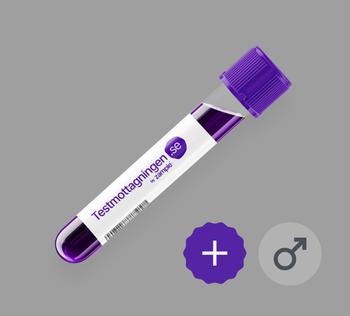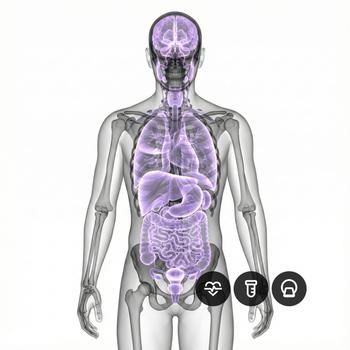What is SHBG?
SHBG stands for sex hormone-binding globulin. When SHBG binds to sex hormones, the amount of free or "bioavailable" sex hormones in the blood decreases. This can affect the effect of sex hormones on various tissues in the body, including sex cells, muscles and bones. Therefore, SHBG levels can play an important role in hormone balance and affect health.
Why analyze SHBG?
An SHBG analysis can be useful in various contexts to estimate hormone balance and help investigate certain conditions.
It can also be used to estimate the percentage of free and thus bioactive testosterone in the blood, which can be useful in suspected testosterone deficiency in men or hyperandrogenism in women which can cause symptoms such as hirsutism (excessive hair growth on the body and face), acne, and increased risk of polycystic ovary syndrome (PCOS), a hormonal imbalance that can affect fertility.
An analysis of SHBG can also be useful when assessing hormonal imbalance in connection with diseases such as liver cirrhosis, hyperthyroidism, hypothyroidism, diabetes type 2 and obesity, as well as when assessing the hormonal influence of drugs such as birth control pills.
The effect of the SHBG value on testosterone
When testosteroneis released from the testicles, it is transported through the bloodstream to the body's various tissues, where it can bind to androgen receptors and exert its effect. But some of the testosterone is also bound to SHBG, which reduces the amount of free testosterone in the blood and makes it less biologically active.
In this way, SHBG can influence the amount and activity of testosterone in the body.
What can a high SHBG value mean?
A high SHBG value means that more of the biologically available testosterone in the blood is bound to the SHBG protein and thus not freely available to exercise its biological activity. This can lead to the body's tissues receiving less effect from the testosterone.
A high SHBG value can also indicate an increased production of SHBG in the liver. This can be the result of several factors, including high estrogen levels, cirrhosis of the liver, or hyperthyroidism.
For women, high SHBG levels may be associated with reduced fertility, low estrogen levels and increased risk of osteoporosis. In men, high SHBG values can be associated with reduced sexual function and increased risk of osteoporosis.
It is important to note that SHBG is part of a complex hormonal balance, and that high SHBG levels do not necessarily indicate a disease or health problem in itself. It is therefore important to interpret SHBG values together with other hormonal markers and based on the individual context.
What can a low value of SHBG mean?
A low value of SHBG means that less of the biologically available testosterone in the blood is bound to the SHBG protein and thus more freely available to exercise its biological activity. This can lead to the body's tissues getting more effect from the testosterone.
Low levels of SHBG can be caused by several factors, including high levels of androgenic hormones such as testosterone or DHEA, hypothyroidism, insulin resistance or high levels of insulin, and certain medications.
Low levels of SHBG can cause symptoms such as acne, hirsutism (excessive body and facial hair growth), decreased sexual desire and fertility, and increased risk of osteoporosis in women.
Low levels of SHBG can also be a marker for increased risk of cardiovascular disease and type 2 diabetes.
Reference range - SHBG men and women
- Premenopausal women, 21-49 years: > 10 nmol/L
- Women after menopause, > = 50 years: 23-160 nmol/L
- Men: 21-49 years: 15-95 nmol/L
- Men: > = 50 years: 22-113 nmol/L



























